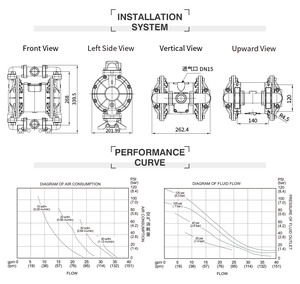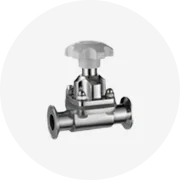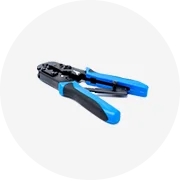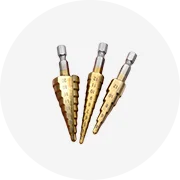Types of 10 GPH Water Pumps
A 10 GPH water pump is a small, low-flow pump that transfers 10 gallons of water per hour, making it ideal for small-scale applications like aquariums, fountains, and other minimal water circulation needs. These specialized pumps come in various designs to suit different requirements and environments.
Submersible Water Pumps
Designed to operate while completely underwater, these airtight pumps prevent water from damaging electrical components. They're the go-to choice for aquariums, small ponds, and decorative water features.
Best for: Aquariums, small ponds, indoor water features
Solar Water Pumps
Powered by solar energy, these eco-friendly pumps are perfect for remote locations without electricity access. They're a sustainable solution for garden fountains, small irrigation systems, and livestock watering.
Best for: Remote locations, eco-conscious applications
Peristaltic Water Pumps
Using rotating rollers that compress a hose to create vacuum, these specialized pumps are ideal for chemically sensitive liquids. Their design minimizes contamination risk, making them perfect for laboratory and medical applications.
Best for: Chemical dosing, medical applications, laboratories
Fountain Water Pumps
Specifically engineered to create controlled water movement for decorative purposes, these pumps generate jets, streams, and cascades. Available in both submersible and inline varieties, they're perfect for creating soothing water features.
Best for: Decorative fountains, water features, small waterfalls
Diaphragm Water Pumps
Using reciprocating diaphragm movement to convey water and create pressure, these pumps handle viscous liquids effectively. Often equipped with pulsation dampeners for steady flow, they're ideal for precision applications.
Best for: Water treatment, precision irrigation, chemical transfer
Expert Tip: When choosing a 10 GPH pump type, consider not only your immediate application but also environmental factors like water quality and placement. Submersible pumps are easier to hide but need waterproof power connections, while external models offer easier maintenance but require additional hose connections.
| Pump Type | Best Application | Power Source | Installation Complexity |
|---|---|---|---|
| Submersible | Aquariums, indoor fountains | Electrical | Low |
| Solar | Garden features, remote locations | Solar | Medium |
| Peristaltic | Labs, medical equipment | Electrical | Medium |
| Fountain | Decorative water features | Electrical | Low |
| Diaphragm | Chemical transfer, irrigation | Electrical | High |
Specifications and Technical Details
Understanding the technical specifications of 10 GPH water pumps is crucial for selecting the right model for your specific application. Here's a comprehensive breakdown of the key specifications:
Flow Rate
The defining characteristic of these pumps is their flow rate of 10 gallons (37.85 liters) per hour, which translates to approximately 0.17 gallons (0.64 liters) per minute. This low, consistent flow makes them ideal for applications requiring gentle water movement.
Power Consumption
These pumps typically consume between 10-40 watts of electrical power, depending on the model and design. Their energy efficiency makes them economical for continuous operation and contributes to their characteristically quiet performance.
Head Height
10 GPH water pumps generally offer a head height (vertical lifting capacity) of 5-20 feet (1.5-6.1 meters). This specification is crucial when determining if a pump can move water to the required elevation in your setup.
Port Size
These pumps feature small inlet and outlet ports ranging from 0.5 to 1 inch (13-25mm) in diameter. Most models include adapters for connecting to standard tubing sizes, facilitating easy integration into existing systems.
Construction Materials
Depending on intended use, these pumps may be constructed from ABS plastic, nylon, aluminum, brass, or stainless steel. Material choice affects durability, corrosion resistance, and suitability for specific water types (fresh, salt, or chemically treated).
Application Range
Primarily used in aquariums, small fountains, hydroponics systems, and miniature water features where consistent, low-volume water circulation is required. Their compact size allows for discreet placement in decorative applications.
Power Consumption vs. Head Height Relationship
As head height increases, power consumption typically rises while maintaining the 10 GPH flow rate. At maximum head height, expect power consumption to be near the upper range (30-40 watts), while operation at minimal head height requires only 10-15 watts in most models.
Selection Insight: When comparing specifications across different 10 GPH pump models, prioritize head height and power efficiency for your specific application. For elevated water features, choose models with higher head ratings even if they consume slightly more power. For energy-sensitive applications like solar setups, prioritize low wattage models with sufficient head capacity for your needs.
Maintenance Guidelines
Proper maintenance of your 10 GPH water pump is essential for ensuring optimal performance, extending operational lifespan, and preventing costly breakdowns. Follow these comprehensive maintenance procedures to keep your pump running efficiently:
| Maintenance Task | Frequency | Procedure | Benefits |
|---|---|---|---|
| Visual Inspection | Weekly | Check for visible damage, unusual noise, leaks, or performance changes | Early problem detection, prevents secondary damage |
| Inlet Filter Cleaning | Bi-weekly | Remove filter, rinse with clean water, clear debris | Prevents clogging, maintains flow rate |
| Complete Cleaning | Monthly | Disassemble pump, clean all components, remove mineral deposits | Prevents buildup, ensures optimal efficiency |
| Impeller Inspection | Monthly | Remove impeller, check for damage, clean thoroughly | Maintains proper water movement, prevents burnout |
| Connection Check | Monthly | Inspect all hoses, fittings, and electrical connections | Prevents leaks and electrical issues |
| Lubrication | Quarterly | Apply manufacturer-recommended lubricant to moving parts | Reduces friction, extends component life |
| Part Replacement | As needed | Replace worn seals, O-rings, or damaged components | Prevents catastrophic failures, maintains efficiency |
Warning: Always disconnect power before performing maintenance on any water pump. Water and electricity create potentially lethal hazards when combined improperly. For submersible pumps, remove from water and allow to dry before disassembly.
Seasonal Maintenance Considerations
If you use your 10 GPH pump seasonally (such as for outdoor fountains or features), proper storage during off-seasons is crucial:
- Thoroughly clean and dry all components before storage
- Store in a clean, dry environment protected from freezing temperatures
- Before restarting seasonal use, inspect all components and perform a complete maintenance cycle
- Test operation in a bucket before reinstalling in your water feature
Maintenance Tip: Keep a maintenance log tracking dates, procedures performed, and observations. This record helps identify patterns of wear or recurring issues, allowing you to anticipate problems before they cause system failure. This is especially valuable for pumps operating in challenging conditions like hard water or environments with high debris.
How to Choose the Right 10 GPH Water Pump
Selecting the ideal 10 GPH water pump for your specific application requires careful consideration of several key factors. Make an informed decision by evaluating these critical selection criteria:
Water Source Analysis
The characteristics of your water source significantly impact pump selection. For clean water applications (aquariums, fountains), standard submersible pumps work well. For contaminated water, choose pumps with debris handling capabilities or protective pre-filters.
Key consideration: Water quality, presence of particles, chemical composition
Flow Rate Requirements
While all pumps in this category deliver 10 GPH, the actual flow rate needed depends on your application. For decorative features, consider the desired visual effect. For functional applications like hydroponics, calculate the required circulation rate based on system volume.
Key consideration: System volume, circulation needs, desired water effects
Energy Efficiency Evaluation
Energy consumption varies significantly between pump models delivering the same 10 GPH flow. For continuous operation, prioritize energy-efficient models with lower wattage ratings. For solar applications, choose pumps specifically designed for variable power input.
Key consideration: Operating costs, power source limitations, environmental impact
System Integration Requirements
Consider how the pump will integrate with your existing setup. Evaluate port sizes, connection types, and mounting options. For hidden installations, compact pump dimensions may be critical. For accessible setups, prioritize pumps with easy maintenance access.
Key consideration: Compatibility, space constraints, maintenance accessibility
Budget Wisdom: While initial purchase price is important, the total cost of ownership includes energy consumption, maintenance requirements, and expected lifespan. A slightly more expensive pump with higher efficiency and durability often proves more economical over time, especially for continuously running applications.
Decision Making Checklist
- Measure vertical lift requirement (head height) from water source to destination
- Identify power source availability (standard outlet, solar capability, battery backup needs)
- Determine operating environment (submersed vs. external, temperature ranges, exposure to elements)
- Consider noise limitations for your setting
- Evaluate maintenance accessibility in final installation location
- Check warranty coverage and availability of replacement parts
DIY Installation and Replacement Guide
Installing or replacing a 10 GPH water pump can be a straightforward DIY project with the right approach. Follow this comprehensive guide to ensure a successful installation:
Required Tools and Materials
Essential Tools
- Adjustable wrenches or socket set
- Screwdriver set (Phillips and flathead)
- Wire cutters/strippers (for electrical connections)
- Utility knife or scissors (for tubing)
- Measuring tape
Required Materials
- New 10 GPH water pump
- Appropriate tubing (match to pump port size)
- Hose clamps or zip ties
- Waterproof electrical tape
- Teflon tape (for threaded connections)
- Clean water for testing
Safety Equipment
- Rubber gloves
- Safety glasses
- Towels or spill containment
- GFCI-protected power outlet
- Voltage tester
Step-by-Step Installation Process
Preparation and Safety
Disconnect all power sources before beginning. For replacement projects, document the existing setup with photos before disassembly. Place towels under work area to catch water spills.
System Drainage
Position a collection container beneath the pump area. Disconnect existing hoses and allow water to drain completely. For aquariums or sensitive systems, partial water retention may be necessary.
Old Pump Removal
Carefully disconnect all electrical connections. Remove mounting hardware and detach the pump from the system. Inspect removed components for damage or wear patterns that might affect the new installation.
New Pump Preparation
Unpack the new pump and verify all components are included. Compare inlet/outlet sizes with your tubing. Apply Teflon tape to any threaded connections. Pre-assemble any brackets or mounting hardware.
Pump Positioning
Place the new pump in the desired location, ensuring it's level and stable. For submersible applications, position the pump on a flat surface away from debris. For external pumps, secure firmly to prevent vibration.
Connection Assembly
Attach tubing to inlet and outlet ports, ensuring proper orientation with water flow direction arrows. Secure connections with hose clamps. For threaded fittings, hand-tighten then add 1/4 turn with wrench—avoid overtightening.
Electrical Connection
Route power cable away from water sources. Connect to power supply according to manufacturer instructions. Use waterproof connections for outdoor or submersible installations. Always use GFCI-protected outlets for water pumps.
System Testing
Refill the system with clean water. Check all connections for leaks before powering on. Start the pump and observe operation, listening for unusual noises and checking for proper water flow. Allow to run for 15 minutes while monitoring.
Safety Warning: Never operate a water pump without water (dry running) as this can cause immediate damage to the impeller and motor. Always ensure the pump is fully submerged before operation when using submersible models.
Installation Pro Tip: Create a "drip loop" in all electrical cords by ensuring the cord hangs below the level of the outlet before rising back up to it. This simple technique prevents water from following the cord into the electrical connection, reducing shock hazards.
Frequently Asked Questions
A 10 GPH water pump should be cleaned at least once a month for optimal performance. However, cleaning frequency depends heavily on your specific environment and water quality. Pumps operating in environments with high mineral content (hard water) or organic matter (like aquariums or outdoor ponds) may require cleaning every 2-3 weeks. Signs that your pump needs immediate cleaning include reduced water flow, unusual noises, or visible debris accumulation at the intake.
With proper maintenance, a quality 10 GPH water pump typically lasts 2-5 years of continuous operation. Factors affecting longevity include:
- Construction quality: Premium pumps with sealed bearings and quality impellers last longer
- Operating conditions: Pumps running in clean water outlast those in debris-laden environments
- Maintenance frequency: Regular cleaning and inspection dramatically extend lifespan
- Usage pattern: Intermittent operation causes less wear than continuous running
Many manufacturers offer 1-2 year warranties, but with diligent maintenance, pumps often exceed their warranty period by several years.
Yes, a 10 GPH water pump can be used in saltwater applications, but proper selection is crucial. For saltwater use, choose pumps specifically labeled as saltwater-compatible with corrosion-resistant materials such as:
- Marine-grade stainless steel (316 grade)
- Titanium components
- High-quality plastics like ABS or polycarbonate
Saltwater pumps typically feature sealed housings to protect electrical components from salt corrosion. Even with appropriate materials, saltwater pumps require more frequent maintenance and generally have shorter lifespans than their freshwater counterparts due to the corrosive nature of salt.
10 GPH water pumps are excellent candidates for solar power applications due to their low energy requirements. When selecting a pump for solar operation, consider these important factors:
- Voltage compatibility: Choose pumps designed for DC operation (typically 6V-12V) that match your solar panel output
- Starting current: Select models with low startup current requirements to function even in partial sunlight
- Battery integration: Consider systems with battery backup for consistent operation during cloudy periods
- Controller compatibility: Some solar pumps include or require specialized controllers to manage variable power input
Purpose-built solar pumps often include features like dry-run protection and variable speed operation that adjust flow based on available sunlight, making them more efficient for solar applications than conventional AC pumps with adapters.



















































































































































































































































 浙公网安备 33010002000092号
浙公网安备 33010002000092号 浙B2-20120091-4
浙B2-20120091-4